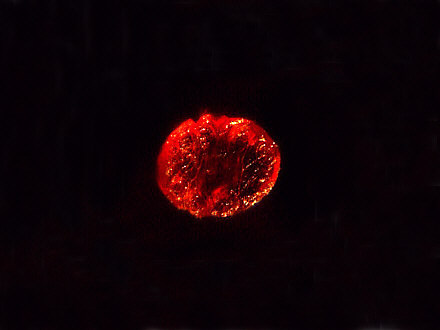A problem with the definition of the term 'life'
In Germany there is a popular pupils' textbook, the 'Linder'. It contains
a basic definition of life well known to most of us:
Any form of life is linked to chemical reactions.
At the moment when those chemical reactions stop
life of an amoeba ends;
thus biochemical reactions habe to be considered as a characteristic
sign of life.
Already some time ago scientists have noticed that such definitions
put the dry water bears in the reign of death, not life, as there
is no noticeable chemical activity within the tuns.
Crowe (see literature) even goes a step further,
when stating that - following those definitions in the strict sense -
a tardigrade not coming back to active life from the dry
state might have died after having been dead already before!
Crowe offers a simple way out of all those self-made definition problems:
it seems to be a mistake of the definition to link life and biochemical activity
so closely. Life can be but needn't be connected to biochemical activity.
Following Crowe life might be better defined by the highly organized and very complex
chemical molecule structures which bear the chance to live within their complexity.
As a consequence death would have to be assumed only after a complete breakdown
or destruction of those complex structures.
The most important facts about the water bear dry state
The following informations are based on the article by Crowe cited below.
It is important also for the microscope amateur to understand that the tardigrades
need a certain minimum of time and favourite environmental conditions in order to
cope with the enormous difficulties to freeze their active life in a such a way
that a revival will still be possible, even after years. As a consequence it must be
understood that it would be stupid and unfair to let the tardigrades dry on
a slide in a centrally heated room. They would have no chance to survive such
a sudden dryness attack which is far from the natural situation
within a moss cushion well buffered with respect to humidity.
There is plenty of time until such a wet moss cushion becomes completely dry
even in plain sunlight. Furthermore the tardigrades cling to the moss plants and
hide within the cavities among the moss leaves. This is one of the reasons
why it can be so difficult to find the tardigrade tuns in dry moss cushions.
After what has been said it should be quite understandable that a rather high
relative humidity value of about 80% seems to be realistic for optimum revival
survival rates. A further result from science is that the tuns are better prepared for
revival after having been stored for some time at elevated humidity.
So, when you have stored your tardigrade samples within a dry place like a
drawer you should put them at a slightly more humid place, e.g. in a sheltered
place outside for some days in order to provide them with the best revival chance.
The tardigrades have an inbuilt desiccation protection, their skin: during the
process of drying the tardigrades tend to reduce their outer surface area by
retraction of the head and limbs and the skin seems to get less permeable to
water vapour. The inner organs have to be packed in a manner that they do not
become damaged and dysfunctional during the process of further shrinking.
A litte bit of water bear chemistry (again following Crowe, see literature) |
![[Title fragment 1.1]](t1_1.gif)
![[Title fragment 1.2]](t1_2e.gif)
![[Title fragment 1.3]](t1_3e.gif)
![[Title fragment 3.1]](t3_1.gif)
![[Title fragment 3.2]](t3_2.gif)
![[Title fragment 3.3]](t3_3e.gif)
![[Title fragment 1.1]](t1_1.gif)
![[Title fragment 1.2]](t1_2e.gif)
![[Title fragment 1.3]](t1_3e.gif)
![[Title fragment 3.1]](t3_1.gif)
![[Title fragment 3.2]](t3_2.gif)
![[Title fragment 3.3]](t3_3e.gif)

![[trehalose]](f_treh.jpg)
![[glycerine]](f_glyc.jpg)
![[glycogene]](f_glyk.jpg)